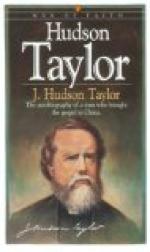“Opposite Fishkill is Newburgh, which is in the great valley of Lower Silurian or Cambrian limestone and slate. North of that, on the west side of the river, the formations occur in their usual order, their outcrops running northeast and southwest. On the N. Y. C. & H. R. R. R., on the east side, the same valley crosses, and the slates from Fishkill to Rhinebeck are about the same place in the series; but being destitute of fossils and very much faulted, tilted and disturbed, their precise geology is uncertain. See the exposures in the cuts at Poughkeepsie. The high ground to the east is commonly called the Quebec group.
* * *
Amid thy forest solitudes one climbs
O’er crags, that proudly
tower above the deep,
Along the verge of the cliff, and he can
hear
The low dash of the wave with startled
ear.
Fitz-Greene Halleck.
* * *
“A series of great dislocations with upthrows on the east side traverse eastern North America from Canada to Alabama. One of these great faults has been traced from near the mouth of the St. Lawrence River, keeping mostly under the water up to Quebec just north of the fortress, thence by a gently curving line to Lake Champlain or through western Vermont across Washington County, N. Y., to near Albany. It crosses the river near Rhinebeck 15 miles north of Poughkeepsie and continues on southward into New Jersey and runs into another series of faults probably of a later date, which extends as far as Alabama. It brings up the rocks of the so called Quebec group on the east side of the fracture to the level of the Hudson River and Trenton.
“Catskill Mountains. For many miles on this railroad are beautiful views of the Catskill Mountains, 3,800 feet high, several miles distant on the opposite or west side of the river, and which furnish the name for the Catskill formation. The wide valley between them and the river is composed of Chemung, Hamilton, Lower Helderberg and Hudson River. The geology on the east or railroad side is entirely different.
“Albany. The clay beds at Albany are more than 100 feet thick, and between that city and Schenectady they are underlaid by a bed of sand that is in some places more than 50 feet thick. There is an old glacial clay and boulder drift below the gravel at Albany, but Professor Hall says it is not the estuary stratified clay.”
* * *
There has that little stream
of water been playing among the hills
since He made the world, and
none know how often the hand of God
is seen in a wilderness but
them that rove it for a man’s life.
James Fenimore Cooper.
* * *
THE HUDSON TIDE.
(Condensed from article by permission of writer.)




